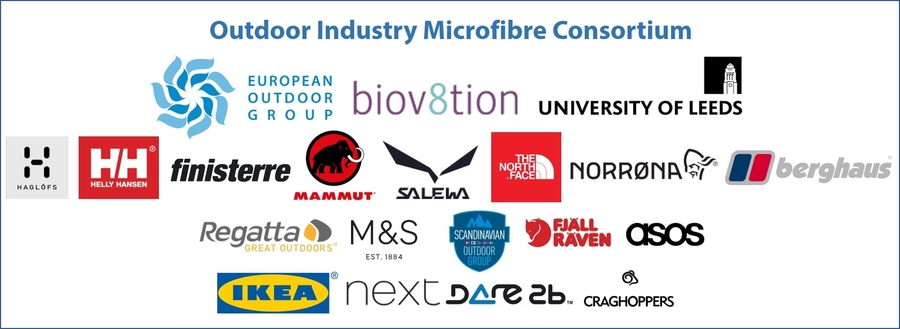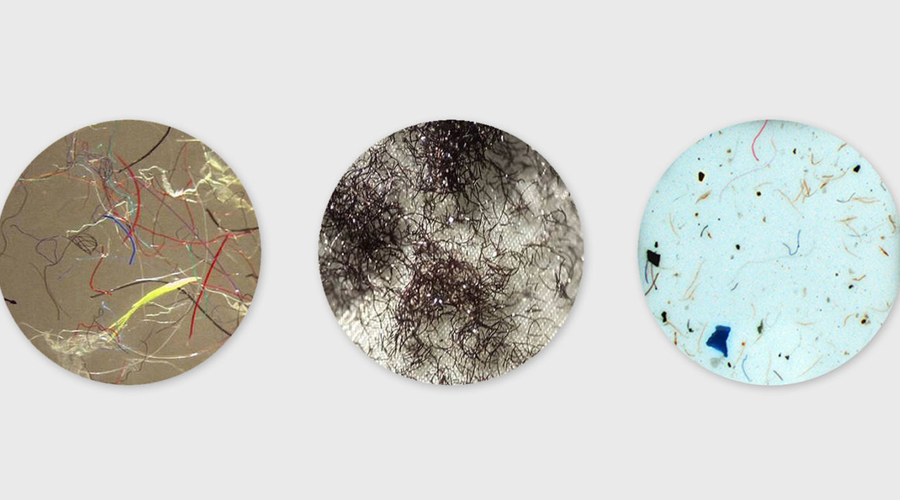The Outdoor Industry Microfibre Consortium is beginning work on an infographic and roadmap as well as an applied research project.
<span style="color: #808080;">The European Outdoor Group (EOG) is taking steps to tackle microfiber pollution, which is caused by tiny fibers escaping from synthetics like polyester and nylon and making their way into bodies of water. The EOG unveiled today its latest microfiber-related initiatives as part of the ongoing Outdoor Industry Microfibre Consortium project in conjunction with Biov8tion and the University of Leeds.
On this side of the pond, Patagonia conducted an exploratory study in 2016 – and released an update in February 2017 – about the looming problem of microfiber pollution. The brand is continuing to explore bio-based fabrics and biodegradable solutions for fibers and packaging. It’s also investing in a waterless textile company called Tersus Solutions, which SGB reported on as it relates to Oregon’s The Renewal Workshop.
Returning to today’s development, the Outdoor Industry Microfibre Consortium has confirmed that it is beginning work on an infographic and roadmap as well as an applied research project. Both are designed to facilitate a shared understanding of the complex challenges presented by microfibers, and to build knowledge of the factors that will play a role in finding viable solutions for the outdoor industry to implement.
“Microfiber pollution and its sources, fates and effects present an ongoing challenge for the textile and garment industries,” the EOG stated in a release. “Working with research partners Biov8tion and the University of Leeds, alongside major brands such as Adidas, Asos, Berghaus, Craghoppers, Dare 2b, Finisterre, Fjällräven, Haglofs, Helly Hansen, IKEA of Sweden, Kering, Mammut, Marks and Spencer, Norrona, Next, Paramo, Regatta, Salewa and The North Face, the Microfibre Consortium aims to develop improved knowledge of microfibre shedding and to work towards sustainable solutions.”

Katy Stevens, sustainability project manager at the EOG, commented: “We have been delighted with the proactive and collaborative response of the outdoor and clothing industries to tackle this issue head on and believe that the new projects will undoubtedly contribute to scientific understanding, communications, and the development of solutions.”
The new infographic and roadmap will be an industry first to map out the interlinked parts of the microfiber challenge. It will demonstrate the effect of raw materials and processes across the supply chain, and later in the consumer-facing aspect of the industry.
Sophie Mather, founder of Biov8tion, added: “The roadmap will outline an industry-wide action plan against a set time frame. The intention is that it becomes a clear tool to visualize ongoing research and product based solutions, and manage the expectations of brand, retailer and supply chain partners as they tackle microfiber pollution in their longer-term strategies.”
The one-year research project, to be carried out by the University of Leeds, will begin by validating a pilot test methodology to provide an industry standard on microfibers, a vital step to enable the evaluation of fabric performance, and a precursor towards new materials development and innovation.
Research will focus on building a comprehensive picture of why microfiber shedding occurs and how it’s influenced by production and use factors. The ultimate objective? To move the industry closer to effectively addressing the problem through prevention or the re-engineering of fibers and fabrics with reduced shedding propensities.
“With the proliferation of reports estimating the scale of microfiber release from clothing, it is important that this project develops the necessary scientific evidence base, from which the industry and others can build targeted solutions for microfibers,” said Mark Sumner, lecturer in sustainability and fashion at the University of Leeds.
Initial work has demonstrated more opportunities for consortium involvement in the development of aligned industry tools and resources for use, both in-house and by external supply chain partners. There is also potential for involvement in additional research and development within the supply chain in order to identify and commercialise brand product solutions.
The European Outdoor Group was founded in 2003 by 19 outdoor companies that recognized the need for a cohesive, cross-border approach to representation of the outdoor sector. The combined strength of the EOG’s 98 full and 10 associate members allows the group to represent the European outdoor industry in a constructive and positive manner.
For more information about the Outdoor Industry Microfibre Consortium contact responsibility@europeanoutdoorgroup.com.
Lead photo courtesy Patagonia, additional photo courtesy EOG










